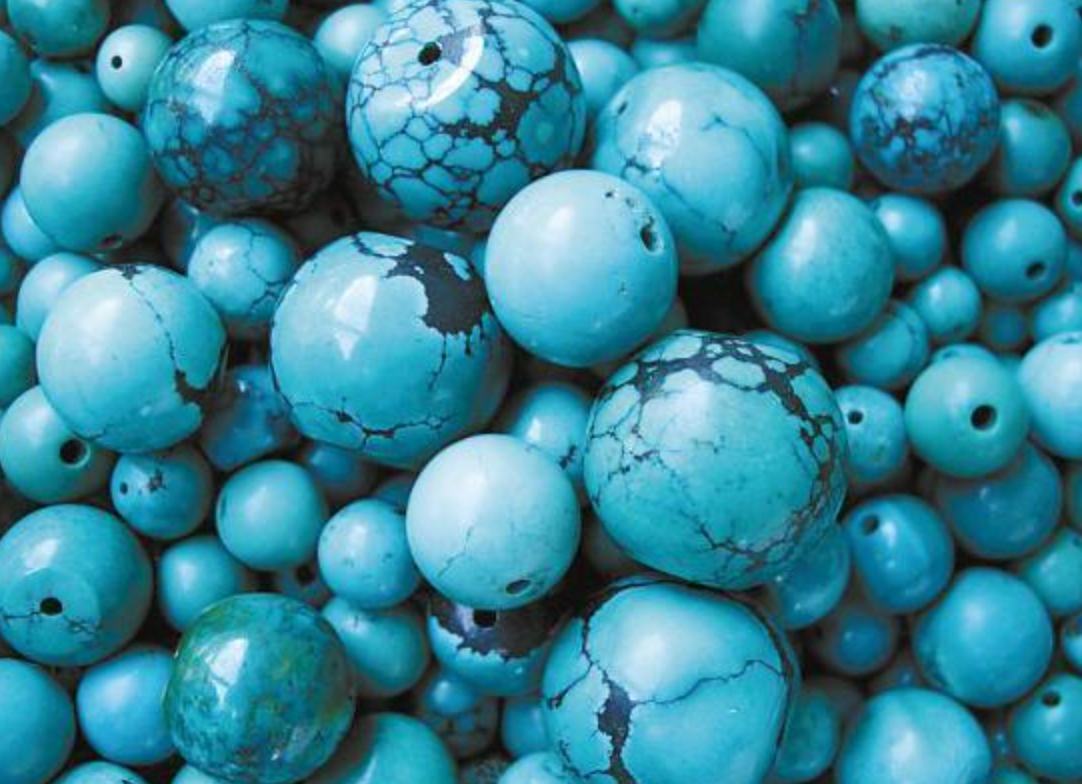
The Symbolism Behind Turquoise Bracelets: Why They Make Perfect Spiritual Gifts
Share
Introduction: Earth's Ancient Whisper
For over 5,000 years, turquoise has served as humanity's bridge between earthly existence and divine realms. From Persian warriors to Navajo healers, this sacred stone carries ancestral wisdom in its azure veins. Let's explore why these handcrafted talismans remain humanity's most cherished spiritual companions.
Table of Contents
1. Historical Roots of Turquoise Bracelets
Sixth Dynasty Egyptian miners risked desert extremes to extract "mefkat" stones for pharaonic burial masks. In China's Shang Dynasty, turquoise adorned ceremonial jade blades as celestial connection points. Tibetan nomads still stitch raw stones into children's garments, believing the stone absorbs negative energy before it reaches the wearer.
2. Cultural Symbolism Across Civilizations
Persian mystics called it "pirouzeh" (victory stone), embedding it in sword hilts for divine protection. Native American traditions view turquoise as solidified sky fragments, essential for rain rituals. In Islamic architecture, turquoise tiles symbolically recreate paradise gardens. Each culture's interpretation reveals universal truths about spiritual protection.
3. Chromatic Alchemy: Turquoise's Visual Power
The stone's blue-green spectrum activates both heart (green) and throat (blue) chakras simultaneously. This color duality explains its historical use in truth-telling ceremonies - Mayan priests wore turquoise when interpreting divine messages. Modern energy workers note its unique ability to balance emotional expression with compassionate listening.
4. Healing Properties & Practical Care
Traditional Chinese medicine uses turquoise compresses to reduce inflammation, while Ayurvedic practitioners place stones on the third eye during meditation. For daily wear: Cleanse weekly under running water, recharge in sunlight (avoid prolonged exposure), and store separately from harder gemstones. The stone's porous nature makes it sensitive to chemicals and perfumes.
5. Gift-Giving Through Spiritual Seasons
Birth: Tibetan "Dzi bead" bracelets protect newborns' auras
Weddings: Navajo-style squash blossom designs bless unions
Mourning: Persian Farsi-inscribed stones memorialize departed souls
Always pair with handwritten notes explaining the specific cultural symbolism you've chosen.
6. Discerning Authentic Turquoise
Natural turquoise displays:
- • Web-like matrix patterns (avoid uniform "spiderweb" designs)
- • Temperature sensitivity (warms slowly against skin)
- • Subtle color variations under different lighting
Ask sellers about mining origins - Sleeping Beauty (Arizona) and Nishapur (Iran) stones command particular reverence among collectors.
7. Crafting Timeless Spiritual Legacies
Turquoise develops patina through generations of wear, creating living records of spiritual journeys. Contemporary artisans combine ancient wax-carving techniques with energy-charging rituals. When gifting heirloom pieces, include storage pouches with cleansing instructions to maintain the stone's vibrational integrity.
FAQ
-
Can turquoise help with anxiety?
Many users report reduced stress when wearing it during meditation, though effects vary by individual sensitivity. -
How to differentiate natural from stabilized turquoise?
Natural stones feel slightly porous; stabilized versions have plastic-like smoothness. Price points also differ significantly. -
Is turquoise suitable for daily wear?
Yes, but avoid contact with cosmetics. Opt for bezel settings that protect the stone's edges. -
Why do some turquoise pieces change color?
Natural oxidation causes gradual darkening, considered desirable by collectors as "the stone matures." -
Can I combine turquoise with other crystals?
Clear quartz amplifies its energy, while rose quartz creates emotional balance. Store separately from harder stones like diamonds.































